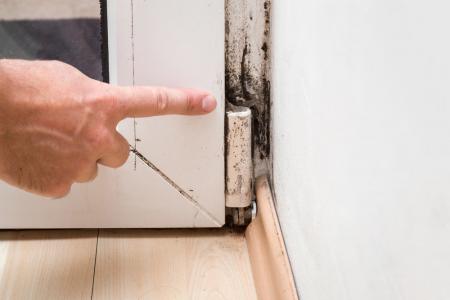
Mold: An Uninvited and Potentially Dangerous Guest in Your Home
Mold is a type of fungus that grows from microscopic spores that can be found everywhere, indoors and outdoors. It appears in a wide range of colors, including black, white, orange, green, or purple.
If you’ve ever forgotten about a container of leftover food, you’ve probably received a crash course in mold growth.
Bathtub tile and shower curtains are prime candidates for household mold. In small quantities, mold is unsightly but typically harmless.
That doesn’t mean you should ignore it. If mold takes up residence, it can pose potentially dangerous issues to your health and your home.
Health Issues
Some people are sensitive to molds and will experience nasal congestion, sore throat, coughing, wheezing, red eyes, or skin irritations when exposed to it.
Someone with mold allergies, asthma, or chronic lung disease will experience more severe reactions.
Certain types of mold are more dangerous than others, including some varieties of black mold, which release harmful toxins into the environment called mycotoxins.
In rare instances, long-term exposure to high levels of mycotoxins can lead to severe mental and neurological symptoms like memory loss, anxiety, and numbness in hands and feet.
Additionally, the Centers for Disease Control and Prevention (CDC) points out that some studies suggest a possible link between early mold exposure in children and the potential to develop asthma.
Damage to Physical Structures
Mold feasts on organic materials, including paper, wood, and fabrics. In most homes, wood plays a significant structural role, supporting floors, walls, and ceilings.
Organic materials are also prevalent in drywall, wallpaper, carpeting, and ceiling tiles.
It takes time, but in extreme cases, unrestrained mold can weaken structural beams, cause walls to crumble, and make floors and ceilings collapse.
As with any home maintenance concern, the sooner problems are caught, stopped, and repaired, the better.
Tell-Tale Signs
Mold loves moisture. If your house has experienced flooding, leaking pipes, or other water damage—or you’ve noticed condensation or high humidity indoors—your home is creating an inviting place for mold to grow.
When searching for mold, recognize that you may not be able to see it. It can grow behind walls, under flooring, in HVAC ducts, and other less-than-visible places.
Other warning signs that your home may have conditions that invite mold growth include:
Smell – any parts of your home that smell musty or damp are potential candidates.
Physical changes – look for wallboards or woodwork that is warped or peeling paint. Rusty pipes can also indicate a moisture problem.
Address mold immediately before it spreads to other areas. If, for instance, humidity and condensation in your HVAC ducts have resulted in mold growth, heating and cooling your home can move those spores into every room.
If you discover a mold issue, don’t disturb it until you know how to handle it safely. DIY methods are typically appropriate for small problems. However, major or dangerous infestations require professional remediation services.
